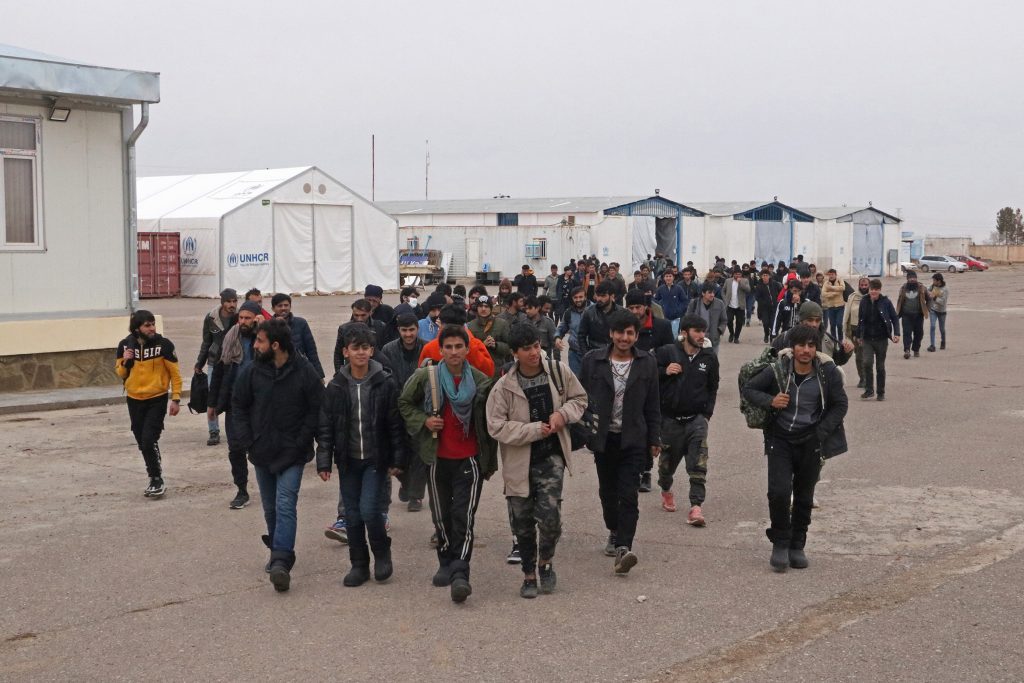The impact of Migrant Return on Worsening Poverty in Afghanistan
Written by Hussain Ali Haidari

Introduction
Over the past year, there’s been a significant increase in the forced return of Afghan migrants from other countries to Afghanistan. This expulsion of migrants has particularly intensified over the last four months, primarily from Pakistan, Iran, and Turkey. The fundamental question now is: What impact will the return of these migrants have on rising poverty in Afghanistan?
To answer this crucial question, we first need to understand Afghanistan’s current poverty index status and the number of Afghan migrants in other countries, especially those mentioned above.
Poverty Rate in Afghanistan
In 2015 and 2016, reports indicated that around 5.3 million people were living in poverty in Afghanistan. However, this number has sharply increased in recent years. According to the World Bank, Afghanistan under the Taliban’s rule is now among the poorest countries in the world. The United Nations Development Program (UNDP), citing 2022 data, reported that 34 million Afghans are living below the poverty line.
Factors Intensifying Poverty Under Taliban Rule
Several major factors have contributed to the rise in poverty in Afghanistan:
Unemployment: The International Labor Organization (ILO) reported Afghanistan’s unemployment rate at 11.22% in 2019 and 11.7% in 2020. However, the same organization now states that the unemployment rate in Afghanistan has increased by more than 50% since the Taliban took power. According to the ILO, with the Taliban in control, several government agencies like the Ministry of Women’s Affairs and the Human Rights Commission have been abolished. Many private universities, numerous international organizations, media outlets, and educational institutions, including those for music, cinema, and painting—have also ceased operations. With women confined to their homes, all female employees have lost their jobs.
Reduction in Government Positions: The significant reduction in government positions, especially in higher education and education Ministries, the Ministry of Interior, and the Ministry of Defense, is another consequence of the Taliban’s presence in Afghanistan. These cutbacks have left hundreds of thousands of people jobless and confined to their homes.
Limited Aid: After the Taliban came to power, not only were Afghanistan’s assets in international banks frozen, but humanitarian aid to the Afghan people was also restricted or completely cut off. According to reports from the United Nations, “in 2024, only 30% of the required aid for Afghanistan has been secured, with a deficit of over two billion dollars.”
Return of Migrants: Another significant factor contributing to poverty in Afghanistan is the return of migrants from other countries, particularly Pakistan and Iran. Pakistan and Iran have historically hosted the largest numbers of Afghan migrants. According to statistics released by Iran’s Statistical Center in 1403 (Persian calendar year), over 2.788 million legal Afghan migrants live in Iran. Some Iranian media outlets have reported the total number of legal and illegal Afghan migrants in Iran to be over 5 million.
The Number of Returnees
The number of Afghan returnees from Iran and Pakistan is also significant. According to the UNHCR, “in the first four months of 2025, nearly 435,000 Afghan migrants returned to Afghanistan from Iran. Of these, 252,400 individuals were forcibly expelled.”
During the same period, over 196,000 Afghan migrants also returned to Afghanistan from Pakistan. This aligns with another report from the same organization, published on Sunday, June 1, that stated 998,500 Afghan migrants returned from Pakistan to Afghanistan over the past 21 months.[1]
The International Organization for Migration (IOM) reported that from May 2022 to April 2023, approximately 630,000 Afghans entered Iran, while around 766,000 returned from Iran to Afghanistan. Within that same timeframe, over 3.6 million people traveled to Pakistan, and roughly 3.4 million Afghans returned from Pakistan.
According to statistics released by Taliban Ministry of Refugees and Repatriation, 4,263,296 people have returned to Afghanistan since the fall of the Islamic Republic of Afghanistan until March 2025.[2]
It’s important to note that a similar situation is unfolding in other countries as well. Official reports indicate that over 77,000 Afghans have been relocated to the United States since the fall of the Islamic Republic of Afghanistan. However, many of these individuals still lack clear legal status, leading to concerns about their potential deportation.
The Impact of Returning Migrants on Life and Poverty
Afghanistan is in a dire state when it comes to daily life and livelihoods. Unemployment, poverty, population growth, and weak household economies have plunged almost all Afghans into deeper suffering. The return of migrants is a major challenge that’s making this crisis even worse.
These returning migrants are now facing countless, overwhelming problems back home. Lack of housing and shelter, insufficient food, no access to proper healthcare, unsafe drinking water, no jobs, and limited educational opportunities have made survival difficult, if not impossible, for them.
If this trend continues, Afghanistan could face numerous challenges and sink into an incurable crisis. The uncontrolled and overwhelming influx of returning migrants into rural areas and major cities like Kabul, Herat, Balkh, and Kandahar has created a massive social and economic crisis. It’s driving up the prices of food, fuel, and commercial goods, increasing rent, and intensifying unemployment.
The Taliban’s strict restrictions on people, especially women, along with various new taxes on properties, homes, vehicles, and more, are causing immense suffering for poor Afghans, making them lose hope for the future.
Gul Ahmad Momand (pseudonym) is one such person who came to Kabul from Pakistan a month ago. He has 12 family members. He says, “I went to Pakistan 15 years ago. Even though I was the only one working, I was happy with my life. Now I’ve been in Kabul for a month. I’ve rented a house for 10,000 Afghanis, but I have no job. I can’t find any work.”
Ramadan (pseudonym) is another individual who was arrested by Iranian police at his home in Isfahan on May 1st of this year and deported. He recounts, “One morning, Iranian officers raided our house, put all of us in a car, took us to a camp, and then deported us via the ‘Islam Qala’ border crossing the next day.” Like Momand, he’s still unemployed and is living at a friend’s house in the Karte Sakhi area of Kabul. He adds, “Life here is like hell. We buy water for ten Afghanis a can. Government offices aren’t hiring us. I’m at a loss for what to do. The ground is hard, and the sky is far away.”
Conclusion
After the Taliban’s return to power, life in Afghanistan has become significantly harder for its people. The implementation of harsh laws against women, discriminatory gender and ethno-religious practices, and new tax regulations have intensified the poverty crisis and made daily life insecure across the country. With the uncontrolled influx of migrants returning from various countries, especially Pakistan, Iran, and Turkey, the scope of poverty has expanded, pushing Afghanistan into a deep humanitarian crisis.
[1] . [1] Jomhor News – The Crisis of Returning Migrants: Hundreds of Thousands Left Without Aid. Link: https://www.jomhornews.com/fa/news/182767/#
[2] . Ministry of Refugees and Repatriation – Number of Returnees After the Victory of the Islamic Emirate Until March 30, 1403 (Afghan Calendar Year). Link: https://morr.gov.af/dr
